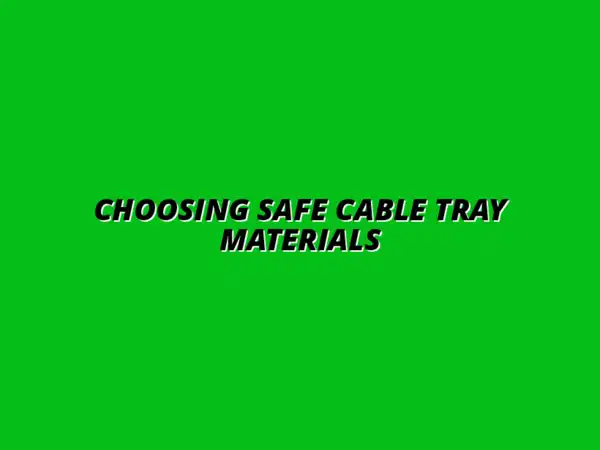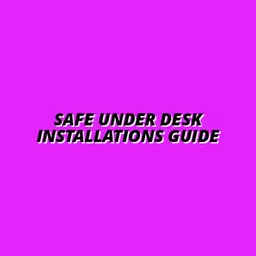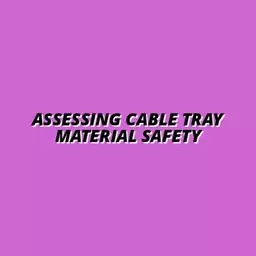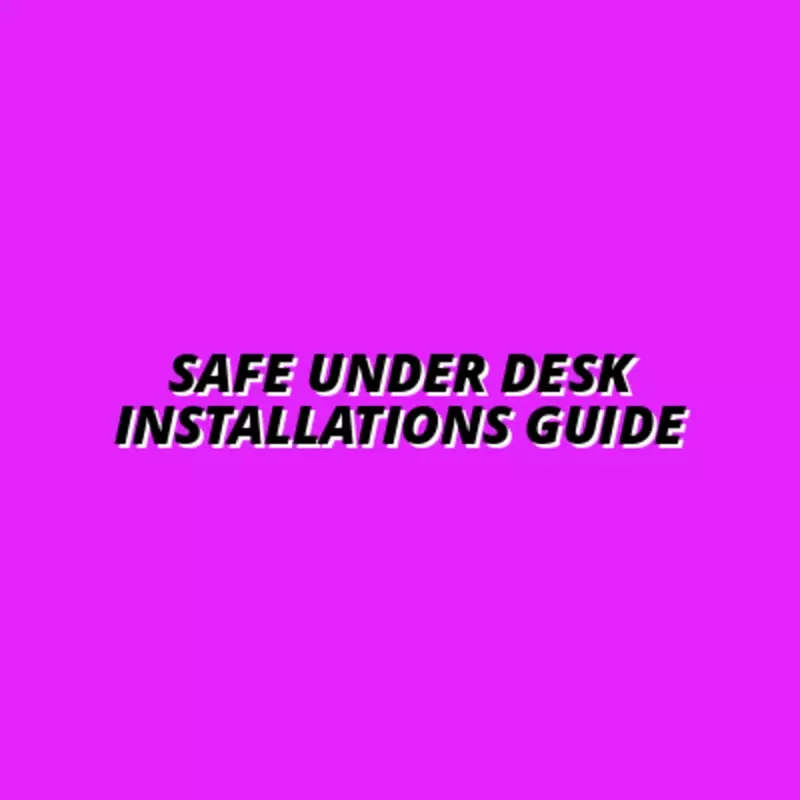
Choosing Safe Cable Tray Materials
In the realm of cable management, where safety and efficiency intertwine, understanding the right materials can be a game changer. With strict regulations in place, it’s not just about aesthetics—it's about creating a safe workspace that enhances productivity. This guide will equip you with essential insights to navigate material selection for cable trays effectively.
What You Will Learn
- Understanding OSHA and NEC regulations is crucial for ensuring a safe and compliant installation.
- Evaluating the pros and cons of metallic and non-metallic materials helps tailor your choice to your workspace needs.
- Each material type—aluminum, steel, stainless steel, and FRP—has unique attributes that affect durability and cost.
- Assessing load capacity is vital to prevent sagging and failures in cable trays.
- Fire and chemical resistance are key factors that should not be overlooked for safety in different environments.
- Proper installation practices, including the use of covers and correct configurations, enhance safety and functionality.
- Regular inspection and maintenance are essential for long-term safety and efficiency in cable management systems.
- Engaging with communities focused on electrical safety can provide valuable insights and foster best practices.
Comparison of Cable Tray Materials: Pros and Cons
This section highlights key attributes of the materials commonly used for cable trays, enabling informed decision-making based on their characteristics.
Aluminum
- Pros: Lightweight, rust-resistant
- Cons: Less durable than steel
Steel
- Pros: Strong, cost-effective
- Cons: Susceptible to corrosion
Stainless Steel
- Pros: Chemical resistant, durable
- Cons: Higher cost
FRP (Fiber Reinforced Polymer)
- Pros: Lightweight, corrosion-resistant
- Cons: Can be more expensive
Essential Considerations for Selecting Safe Materials for Cable Trays
Choosing the right materials for cable trays is crucial for ensuring both safety and efficiency in your workspace. At Under-Desk Tray Hub, we understand that a well-organized space leads to enhanced productivity, and the materials you select play a significant role in that organization. By keeping in mind essential considerations, you can make informed decisions that not only meet aesthetic standards but also adhere to safety regulations.
In this guide, we’ll explore various aspects of selecting safe materials for cable trays, including regulatory standards, material types, installation safety, and compliance with industry standards. Whether you're setting up your home office or upgrading a corporate workspace, these insights will help you navigate the world of cable management like a pro!
Understanding the Role of OSHA and NEC Regulations
One of the first steps in selecting safe materials for cable trays is understanding the regulations set forth by OSHA (Occupational Safety and Health Administration) and the NEC (National Electrical Code). These guidelines are essential to ensure that your installation is safe and compliant. OSHA provides regulations designed to protect workers from hazards, while the NEC outlines the safe installation of electrical wiring and equipment.
Being aware of these regulations not only helps in compliance but also ensures that you create a safe working environment. Ignoring these guidelines can lead to dangerous situations, such as electrical fires or accidents. Let’s dive deeper into what these guidelines entail!
Overview of OSHA Guidelines for Cable Tray Safety
OSHA guidelines focus on various safety aspects regarding cable trays, including proper installation, material safety, and worker protection. Some key points to consider include:
- Ensuring that installations do not obstruct pathways.
- Using materials that can withstand environmental conditions.
- Regular inspections to avoid hazards.
By adhering to these guidelines, you can greatly reduce the risk of incidents while enhancing the security of your workspace.
Key Aspects of the National Electrical Code (NEC)
The NEC provides comprehensive guidelines that dictate how electrical systems, including cable trays, should be installed. Some critical aspects of the NEC include:
- Clearance requirements around cables.
- Proper grounding and bonding practices.
- Use of adequate supports to prevent sagging.
Following NEC guidelines ensures that your electrical installations are not just safe but also effective in their performance. It's vital to be familiar with these codes to ensure compliance and safety in your workspace.
💡 Want to master under-desk cable trays? Start with our foundational guide to all things cable management. 👉 Read the Cable Management 101 Guide
Evaluating Different Types of Cable Tray Materials
Once you have a grasp of the regulations, the next step involves evaluating the different types of materials available for cable trays. Each material comes with its own set of advantages and disadvantages. Understanding these will help you choose the best option for your specific needs. For additional insights, consider exploring cable management tips for under desks.
Comparison of Metallic and Non-Metallic Materials
When comparing metallic and non-metallic materials, consider the following:
- Metallic Materials: Typically more durable and can handle heavier loads.
- Non-Metallic Materials: Often lighter and can be more affordable, but may not support heavy cables.
Ultimately, the choice will depend on your specific workspace needs and the types of cables you plan to use.
Aluminum, Steel, Stainless Steel, and FRP: Pros and Cons
Here’s a brief overview of common materials used for cable trays:
| Material | Pros | Cons |
|---|---|---|
| Aluminum | Lightweight, rust-resistant | Less durable than steel |
| Steel | Strong, cost-effective | Susceptible to corrosion |
| Stainless Steel | Chemical resistant, durable | Higher cost |
| FRP (Fiber Reinforced Polymer) | Lightweight, corrosion-resistant | Can be more expensive |
Each of these materials has its place, depending on your workspace conditions and the cables you're managing.
Durability of Cable Tray Materials Under Various Conditions
It’s essential to assess how different materials perform under various environmental conditions. For instance, if your workspace is exposed to moisture, consider materials that resist corrosion. On the other hand, if your cables will be in high-traffic areas, you need durable options to withstand wear and tear.
By choosing the right material based on environmental factors, you can significantly enhance the lifespan of your cable trays!
Assessing Load Capacity and Structural Integrity of Cable Trays
Different projects require different load capacities. When selecting cable trays, it’s vital to understand their load rating to ensure they can handle the weight of your cables. Overloading trays can lead to sagging and potentially catastrophic failures. For those concerned about safety in rented spaces, consider safe cable tray solutions for renters.
Consider the following when assessing load capacity:
- Know the weight of the cables you’re using.
- Refer to manufacturer specifications for load ratings.
- Account for future expansions—don’t just think about current needs!
Making a careful assessment here can save you a lot of trouble and expenses down the line.
Fire Resistance and Chemical Resistance in Material Selection
Lastly, never overlook fire resistance and chemical resistance when choosing materials for cable trays. Depending on where your cables are installed, they may be exposed to chemicals or environments where fires could occur. Selecting the right materials can protect your investments and keep your workspace safe.
For example, materials with a higher fire rating are preferable in industrial settings, while chemical-resistant materials are ideal for laboratories. Always consider the specific needs of your workspace!
Installation Safety Considerations for Cable Trays
Ensuring that your cable trays are not only safe but also correctly installed is a critical aspect of your workspace organization. At Under-Desk Tray Hub, we advocate for safe and efficient installation practices. Let’s explore some key safety considerations. You may also want to check out under-desk cable safety tips for more comprehensive advice.
Importance of Proper Cable Tray Configurations
Proper configurations are essential for maintaining the integrity and safety of your cable trays. Here are some tips to keep in mind:
- Position trays to allow for sufficient airflow around cables.
- Avoid sharp turns that can stress cables.
- Ensure that trays are securely fastened to prevent movement.
By following these guidelines, you can ensure that your cable management system operates smoothly and safely.
Using Covers to Ensure Safety
Cable tray covers are often overlooked but play a significant role in safety. Installing covers can:
- Prevent accidental contact with live wires.
- Protect cables from dust and debris.
- Enhance the overall aesthetic of your workspace.
Investing in quality covers can lead to a cleaner and safer environment!
Protection from UV Radiation: Best Practices
If your cable trays are in an area exposed to sunlight, UV radiation can damage certain materials over time. To mitigate this risk, consider:
- Using UV-resistant materials.
- Placing trays in shaded areas whenever possible.
- Installing covers to shield cables from direct sunlight.
By following these steps, you can safeguard your investment and extend the lifespan of your cable management system.
Installation Guidelines and Best Practices for Cable Trays
Finally, adhering to best practices during installation is crucial. Here’s a quick checklist to consider:
- Follow the manufacturer's installation instructions.
- Use the right tools and materials for assembly.
- Perform a final inspection to ensure everything is secure.
These simple steps can help you create a safe and organized environment, promoting productivity and efficiency in your workspace.
Pro Tip
When selecting materials for your cable trays, always consider the long-term environmental conditions they will face. For instance, if your workspace experiences high humidity, opt for corrosion-resistant materials like stainless steel or FRP. This proactive approach not only extends the lifespan of your cable management system but also minimizes maintenance costs in the future!
Frequently Asked Questions (FAQs)
What are the key factors to consider when selecting materials for cable trays?
Key factors include regulatory compliance (OSHA and NEC), material durability, load capacity, fire resistance, and chemical resistance.
What are the pros and cons of metallic vs. non-metallic cable tray materials?
Metallic materials are generally more durable and can handle heavier loads, while non-metallic materials are lighter and often more affordable but may not support as much weight.
How do OSHA and NEC regulations impact cable tray material selection?
OSHA guidelines focus on worker safety and proper installation, while the NEC outlines safe electrical wiring and equipment installation standards. Compliance with both ensures a safe and compliant installation.
What are some best practices for installing cable trays safely?
Best practices include proper configuration for airflow, avoiding sharp turns in cable routing, securing trays properly, and using covers to protect cables from damage and accidental contact.
Why is fire resistance important in cable tray material selection?
Fire resistance is important because it can protect your investments and keep your workspace safe in environments where fires could occur. Materials with higher fire ratings are preferable in industrial settings.
Summarizing Key Insights on Choosing Safe Materials for Cable Trays
As we wrap up our exploration of selecting safe materials for cable trays, it's vital to highlight the essential regulations and considerations we’ve covered. Understanding the roles of OSHA and NEC standards is not just a box to check; it is essential for ensuring a safe workspace. Remember, these regulations exist to protect both your equipment and your team!
When it comes to materials, knowing the right attributes is crucial. Whether you’re deciding between metal or plastic trays, evaluating the durability, fire resistance, or chemical resistance can be the difference between a safe installation and a potential disaster. Take these factors into account to ensure you choose the best options for your workspace!
Recap of Critical Regulations and Material Types
Adhering to OSHA and NEC standards is not just about compliance; it is about making your environment safer and more efficient. Each standard provides guidance on ensuring that your cable management system operates without risk. These standards also highlight the importance of selecting the right materials.
- OSHA Guidelines: Focus on worker safety.
- NEC Requirements: Ensure proper installation and protection.
- Material Choices: Metallic vs. non-metallic options.
Key material attributes such as durability, fire resistance, and chemical resistance will ensure safety and effectiveness in your cable tray system. It’s essential to deeply understand these characteristics before making your selection!
Encouraging Best Practices for Installation and Maintenance
Installing cable trays isn't just about placing them under your desk—it’s a process that requires care. Here are a few tips I’ve found effective in ensuring safe installation:
- Follow manufacturer guidelines closely.
- Ensure proper configurations to avoid overcrowding.
- Utilize covers and protective measures for added safety.
Once installed, ongoing maintenance is equally important. Regular inspections can prevent potential hazards down the line. It’s wise to schedule these checks as part of your workspace routine to ensure everything remains in top condition!
Furthermore, it's essential to evaluate the environmental impact of your materials. Choosing sustainable options not only benefits the planet, but it also enhances your brand image. To explore budget-friendly options, check out affordable DIY cable management tools.
Next Steps for Ensuring Compliance and Safety
To stay on top of your cable management game, consider utilizing interactive checklists for material evaluation. These can help ensure you’re meeting all necessary standards while selecting the safest options for your workspace. It’s a simple tool that can make a huge difference!
- Utilize checklists to assess material safety.
- Keep an eye on emerging trends in cable tray materials.
- Review manufacturer specifications and warranty information.
Staying updated on future trends in cable tray materials can also prepare you for innovations that enhance safety and efficiency. As the workspace evolves, so should the materials we use!
Call to Action: Engaging with Safety Standards and Material Selection
Ready to take action? Join communities focused on electrical safety practices! Engaging with like-minded individuals can provide you with invaluable insights and best practices.
Additionally, consider professional consultations for material selection and compliance. This could save you time and ensure that you’re aligning with the best practices in the industry. At Under-Desk Tray Hub, we’re here to guide you in making informed decisions for a safer, more organized workspace!
Recap of Key Points
Here is a quick recap of the important points discussed in the article:
- Understand OSHA and NEC Guidelines: Compliance with OSHA and NEC regulations is critical for ensuring worker safety and proper installation of cable trays.
- Evaluate Material Types: Choose between metallic and non-metallic materials based on durability, load capacity, and environmental factors.
- Assess Load Capacity: Ensure cable trays can handle the weight of the cables and allow for future expansions.
- Prioritize Fire and Chemical Resistance: Select materials that can withstand fire hazards and chemical exposure based on your workspace requirements.
- Proper Installation Practices: Follow best practices for installation, such as maintaining airflow, securing trays, and using protective covers.
- Regular Maintenance: Schedule inspections to ensure the integrity and safety of your cable management system.




